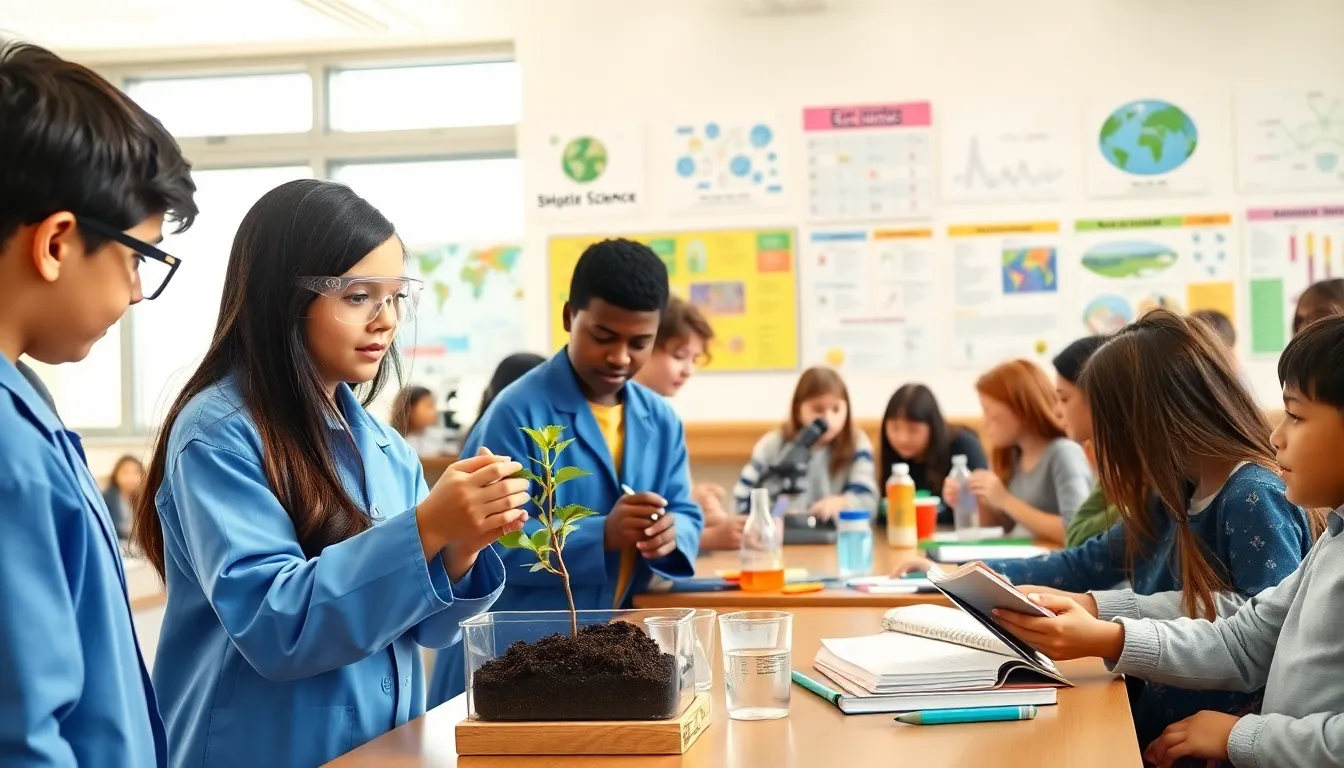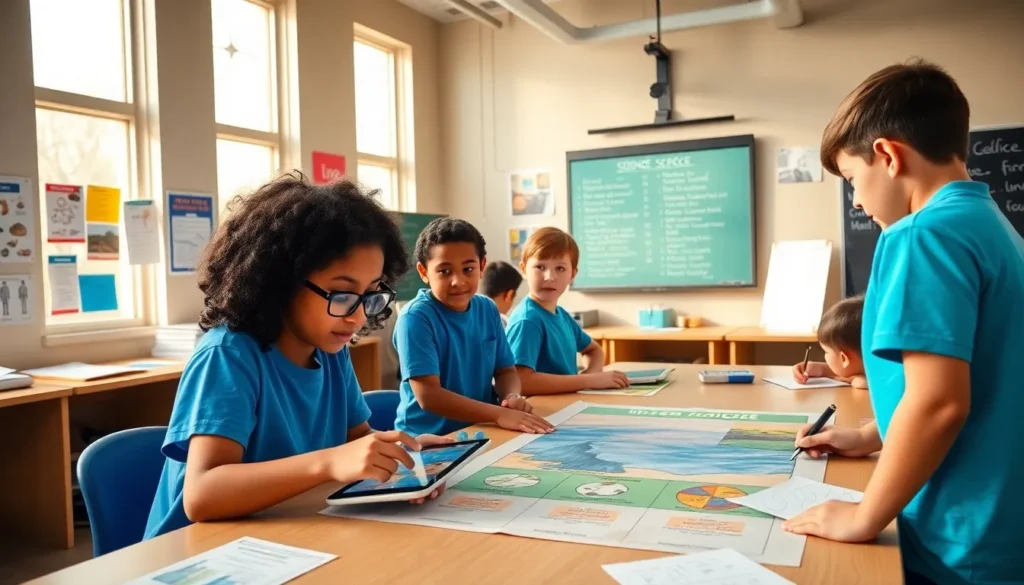In today’s rapidly evolving educational landscape, integrated science education is gaining traction as a compelling approach to teaching. This method not only enriches students’ understanding of scientific concepts but also fosters critical thinking and interdisciplinary learning. A pivotal player in this space is Redwebzine, an innovative platform that seeks to enhance educational outcomes through integrated science. This article delves into the essence of integrated science education, its benefits, the specific role of Redwebzine, implementation strategies, challenges, and future perspectives.
Table of Contents
ToggleWhat Is Integrated Science Education?

Integrated science education is an instructional approach that combines different scientific disciplines into a cohesive learning experience. Rather than studying biology, chemistry, and physics in isolation, this method encourages students to understand how these fields interconnect. For example, topics like climate change can bridge ecology (biology), atmospheric chemistry (chemistry), and physical processes (physics).
This holistic approach helps students see the real-world applications of their studies, making learning more relevant and engaging. By blending concepts and practices from various disciplines, integrated science education fosters a deeper comprehension of how scientific inquiry relates to everyday life, stimulating curiosity and critical thought.
Benefits of Integrated Science Education
The benefits of integrated science education are manifold.
Enhanced Critical Thinking
By linking different scientific concepts, students are encouraged to think critically and synthesize information from various sources. This not only hones their analytical skills but also prepares them for complex problem-solving in real-world situations.
Real-World Relevance
Studies have shown that when students can relate their learning to real-world challenges, such as environmental issues or health crises, they are more likely to engage actively and retain knowledge.
Collaboration and Teamwork
Integrated science education promotes collaboration among students. Working on projects that require input from various angles enhances teamwork skills, preparing students for future workplace dynamics.
Better Retention
Research indicates that students taught through integrative methods demonstrate improved retention of knowledge compared to traditional approaches. When information is connected, it is more accessible to recall later.
The Role of Redwebzine in Science Education
Redwebzine stands out as an influential platform in the landscape of integrated science education. By providing a wealth of resources, including articles, interactive experiments, and multimedia content, Redwebzine facilitates a deeper understanding of scientific concepts.
Comprehensive Resource Hub
As an online magazine, Redwebzine serves as a hub for educators and students alike. The platform curates diverse materials that align with various scientific topics, ensuring that both teachers and students have access to current and relevant information.
Engagement Through Technology
Redwebzine leverages technology to create engaging learning experiences. Interactive tools and visual aids help demystify complex concepts, making science more accessible to students of varying backgrounds.
Community Building
Besides, Redwebzine fosters a community of educators and learners, encouraging collaboration and sharing of best practices within integrated science education. This support network is vital for enriching the learning experience.
Implementation Strategies for Redwebzine Integrated Science
To effectively carry out Redwebzine’s integrated science education, educators can follow several strategic steps:
Curriculum Alignment
Integrating Redwebzine’s resources into the existing curriculum requires careful alignment of educational standards and learning objectives. Educators must identify key areas where Redwebzine can supplement traditional materials, ensuring a seamless blend of content.
Professional Development for Teachers
Training teachers to use the resources on Redwebzine effectively is essential. Professional development programs can provide educators with the skills and strategies needed to integrate these tools into their classrooms actively.
Collaborative Projects
Encouraging collaborative projects that use Redwebzine resources can lead to meaningful learning experiences. For instance, students might work in groups to research a topic using articles from Redwebzine, culminating in a presentation that highlights their findings.
Challenges and Solutions in Integrated Science Education
Even though its numerous benefits, integrated science education faces challenges that require thoughtful solutions.
Resistance to Change
One of the primary hurdles is resistance to changing traditional teaching methods. Educators who are accustomed to isolated subject teaching might find the transition difficult. Solution: Providing ongoing professional support and showcasing successful models can ease this transition.
Resource Limitations
Another challenge is the availability of resources. Not all schools have access to the technology and materials required for an integrative approach. Solution: Schools can seek partnerships with organizations like Redwebzine to access valuable resources at little to no cost.
Assessment Difficulties
Evaluating students’ understanding in an integrated model can be tricky. Traditional assessments may not adequately reflect their capabilities. Solution: Implementing project-based assessments that allow for a demonstration of knowledge across disciplines can provide a more comprehensive evaluation.
Future Perspectives on Integrated Science Education
The future of integrated science education, especially with platforms like Redwebzine, is promising. As technology continues to evolve, opportunities for dynamic learning experiences will grow.
Increasing Digital Accessibility
With the rise of online learning, greater access to integrated science materials is anticipated. This shift can democratize education, making quality resources available to all students, regardless of their geographic location.
Incorporation of AI and AR
Future integrated science education may also see the incorporation of artificial intelligence (AI) and augmented reality (AR). Such technologies can provide immersive learning experiences, allowing students to explore scientific concepts beyond traditional textbooks.
Lifelong Learning
As educational paradigms shift, integrated science education will promote lifelong learning, encouraging students to pursue scientific inquiry outside formal schooling. This mindset will be crucial as society faces increasingly complex scientific challenges.
Conclusion
To conclude, integrated science education represents a transformative approach to learning that prepares students for a rapidly changing world. With the engagement and resources provided by Redwebzine, educators can carry out this model effectively, fostering critical thinking and problem-solving skills among students. By embracing the challenges and leveraging innovative strategies, integrated science education can thrive, eventually shaping the next generation of scientists and informed citizens.



